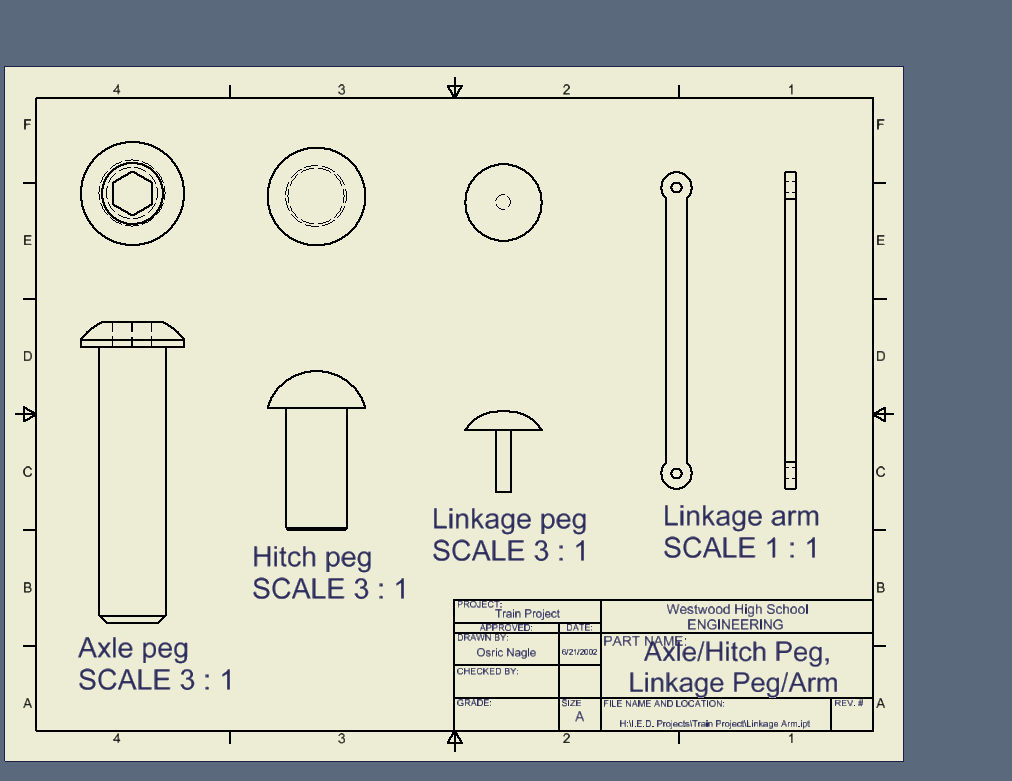These are the heaviest lines used on drawing and are often preprinted with the title block. A different symbol pattern is used for each building material.
Line Conventions Manufacturinget Org
1 Why are Drawings Composed of different line conventions.

. What is the purpose of a sectional view. Students should develop a stylized drawing technique that conforms to the rigid conventions of line drafting with added variations of artistic techniques to produce a very individualized finished. Each line might even need a small adjustment so you need to use different line conventions.
Line Conventions Lines of varying style and thickness are used in specific ways to develop and communicate graphic messages about an objects geometry. There is no one line that is used today that has the function of all of the. The section lining patterns are drawn thin.
1Why are drawing composed of different line conventions. Drawings are composed of different line conventions in order to allow certain areas to be seen such as holes and how deep they go in. This ensures that every drawing produced within Ireland and the UK relating to a building project will follow the same standard principles.
Mechanical drawings should reflect the rigid line control of a mechanically produced drawing. Line Conventions Alphabet of Lines A drawing is made up of different lines. Drawings are composed of different line conventions because not every lines are going to be the same.
What is the purpose of a. Drawings are composed of different line conventions because there are many different types of objects and each line convention is useful for accuratelyefficiently conveying information for a specific or broad range of shapesfeatures. Drawings are composed of different line conventions because not all lines are the same.
The drawings are composed of different line conventions because the object will not be composed to all the same lines. Line characteristics such as widths breaks in. The purpose of a sectional view is to allow other engineers or a manufacturing company to see the details of your part that you cannot see from the default engineering.
Construction Line Very lightly drawn lines to guide drawing other lines and shapes. What is the purpose of the sectional view. Why are drawings composed of different line conventions.
Drawings are composed of different line conventions so you can easily and properly dimension the part the drawing shows. There is a variety. One of the most important line drawing conventions used is the First 8 Lines rule.
Drawing are composed of different line conventions because it has different measures and can be adjusted differently. Drawing have Different line conventions because lines are used to represent many things in an engineering drawing so a variety of lines must used to be able to tell the difference between them. In order to make the drawing easier to read and understand each kind of line is drawn with a different line weight.
Each line might even need a small adjustment so you dont want to make all of your lines of the same convention. The purpose of a sectional view is to allow for a more detailed and close up view of a specific area of a part. What is the purpose of a sectional view.
Why are drawings composed of different line conventions. The development of good detail drawings is a real engineering accomplishment and art. Why are drawings composed of different line conventions For example I might say that a certain whole is a counter sink but if my factory is over in China they do not know what counter sink means unless they want to use a translator which would take more time.
Drawings are composed of different line conventions because not all the lines are going to be the same. Why are drawings composed of different line conventions. View Train presentation from AA 1Train Presentation Conclusion Questions 1Why are drawings composed of different line conventions.
Drawings are composed of different line conventions because not Study Resources. Why are drawings composed of different line conventions. Each line represents something.
Line Types see also ASME Y142M When you are preparing drawings you will use different types of lines to convey information. In the construction industry all drawings are carried out to a British Standard referred to as BS 1192. Borderlines define the active area of a drawing sheet.
Each line might even need a small adjustment so you dont want to. Why are drawings composed of different line conventions. What are standard kitchen table dimensions.
What is the purpose of a sectional view. The First 8 lines rule is a technique of positioning all views of a drawing on a page before attempting to draw any part of it. Standards and Conventions.
The next few slides show some basic line conventions and their use. This will place the drawing precisely and it will be spaced in such a way that you will have enough room for lettering dimensioning. Why are drawings composed of different line conventions.
What are line conventions. What is the purpose of a sectional view. Drawings are composed of different line conventions because not all the lines are going to be the same.
2What is the purpose of a sectional view. Why are drawings composed of different line conventions. Drawings are composed of different line conventions as different line conventions are needed for different purposes for instance.
The line that is used to or shows the cut surface in sectional drawings. 1Why are drawings composed of different line conventions. Object lines show visible definite lines while hidden lines show hidden features and so on.
Why are drawings composed of different line conventions. The purpose of the sectional view is to portray what is inside the objects section. Standards in all areas keep changing so they are not completely standard.

Model Train Engineering Domain
Line Conventions Manufacturinget Org
Line Conventions Manufacturinget Org





0 comments
Post a Comment